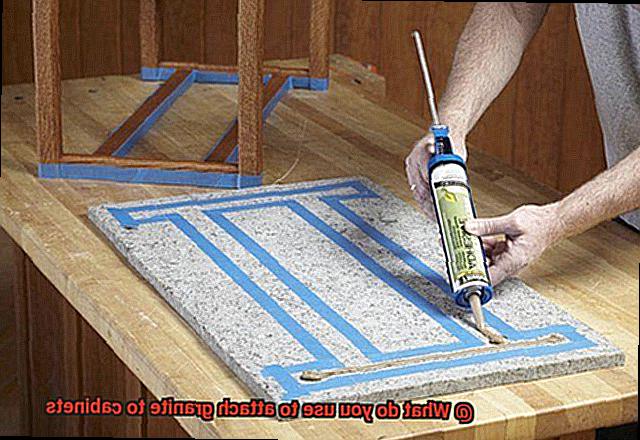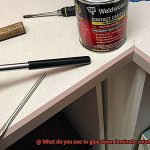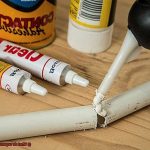Whether you’re an artist working on a stunning multi-paneled masterpiece or simply trying to connect two canvas pieces, it’s crucial to use the right materials and techniques for a solid bond. In this article, we’ll explore various glue options, from traditional choices like PVA and acrylic gel mediums to some out-of-the-box alternatives.
So, let’s jump right in and get those canvases stuck together.
What is Canvas?
Contents
Canvas, a versatile and durable woven fabric, has fascinated artists, craftsmen, and adventurers for centuries. With its rich history and wide range of applications, canvas continues to be a beloved material that shapes our artistic endeavors and practical pursuits. In this blog post, we will explore the many facets of canvas and delve into its captivating uses.
The Artistic Canvas:
Canvas has long been cherished by artists as a surface for painting. Its ability to absorb paint while maintaining its integrity over time makes it the preferred choice for many painters. From acrylics to oils and watercolors, artists can unleash their creativity on canvas, adding depth and dimension with every brushstroke. With different weights and textures available, artists can select the perfect canvas to suit their artistic vision.
Beyond the Easel:
Canvas extends its reach beyond the art world. Its durability and strength make it an ideal material for creating bags, upholstery, and even clothing. Canvas bags have become a fashion statement, combining style with functionality. Upholsterers appreciate canvas for its resistance to wear and tear, making it an excellent choice for furniture coverings that can withstand everyday use. Additionally, canvas has found its way into the world of fashion, with designers incorporating it into clothing items for its rugged yet fashionable appeal.
Canvas in Adventure:
Canvas has also made its mark in the world of adventure and exploration. Sailors rely on canvas sails for their boats, utilizing its strength to harness the power of the wind. Campers and outdoor enthusiasts appreciate canvas tents for their durability and ability to withstand harsh weather conditions. Canvas backpacks provide adventurers with reliable gear that can endure rugged terrains while keeping their belongings safe.
The Digital Revolution:
Advancements in digital printing technology have ushered in a new era for canvas. Artists can now have their artworks printed directly onto canvas, creating affordable reproductions or customizable prints. This innovation has made art more accessible to a wider audience, fostering a deeper appreciation for the beauty and versatility of canvas.
Adhesives for Gluing Canvas to Canvas
Gluing canvas to canvas may not immediately conjure images of artistry or crafting, but it is a valuable technique to have in your creative repertoire. Whether you’re repairing a tear in a canvas painting or fashioning a mixed media masterpiece, the adhesive you choose plays a vital role in creating a robust and enduring bond.
One popular option for bonding canvas to canvas is acrylic gel medium. This thick, paste-like substance, designed specifically for fabric and canvas, dries clear and flexible. Its versatility makes it ideal for mixed media art, with different viscosities available to suit your project’s needs.
If you prefer a liquid adhesive, fabric glue is an excellent choice. Formulated exclusively for fabric bonding, it may not offer the same strength as acrylic gel medium but boasts easy application and invisible drying. When the adhesive’s visibility matters, fabric glue proves invaluable.
Searching for unwavering strength and durability? Look no further than epoxy resin. This two-part adhesive creates an unyielding bond, perfect for heavyweight artwork and woodworking endeavors. However, proceed with caution, as epoxy resin requires meticulous handling and mixing.
Sometimes you need a quick fix or temporary attachment; enter double-sided tape. While it may lack the longevity of other adhesives, it excels at small repairs or securing lightweight canvas pieces.
For any adhesive, cleanliness is paramount; ensure your surfaces are free of dust and debris before applying. Uniform application and adequate drying time are also crucial factors to consider. Test the adhesive on a discreet area of the canvas before committing to the entire artwork to avoid any unwanted reactions or damage.
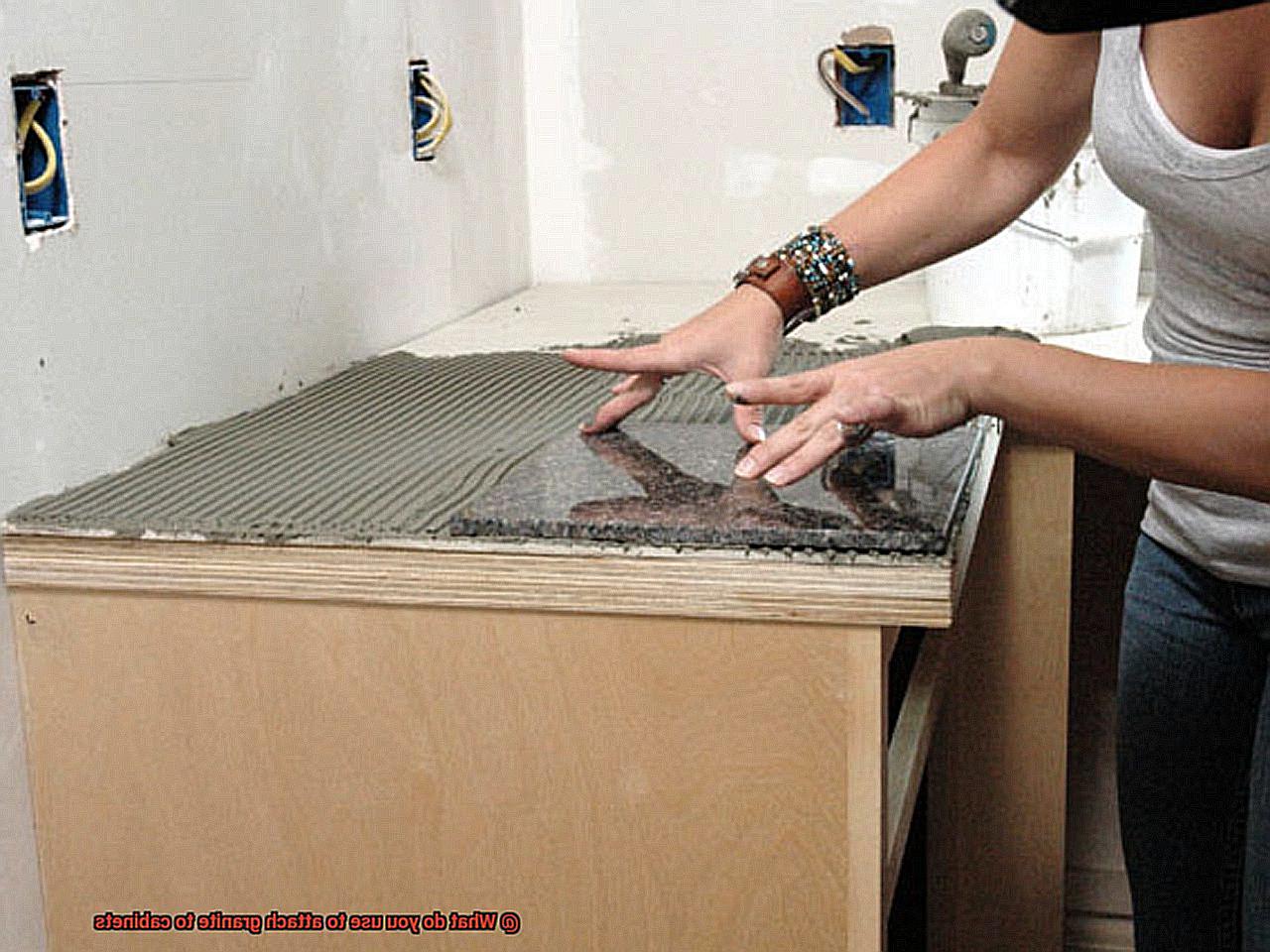
Beyond adhesives, alternative methods exist for attaching canvas to canvas, such as sewing or staple usage. These techniques commonly find employment in constructing canvas panels or stretching canvas onto wooden frames.
Ultimately, the adhesive you select depends on your project’s unique demands and personal preferences. The desired flexibility, bond strength, and adhesive visibility are all factors that should inform your decision.
Acrylic Gel Medium
In the realm of art, finding the perfect adhesive for gluing canvas to canvas is an essential quest. Enter acrylic gel medium, a remarkable substance that not only bonds securely but also preserves the integrity of artwork. In this article, we will embark on a journey through the captivating world of acrylic gel medium, unraveling its properties, advantages, and creative possibilities.
Advantages of Acrylic Gel Medium as an Adhesive:
- Versatility Unleashed: Acrylic gel medium is not just an adhesive; it is a true artistic chameleon. Artists can use it as an extender to increase the volume of their paint or as a texture builder to add dimension to their creations. It even doubles as a varnish to protect and enhance finished pieces. With acrylic gel medium, the creative possibilities are endless.
- The Invisible Bond: Picture this – your artwork flawlessly glued together with no visible residue or stiffened canvas. That’s the magic of acrylic gel medium. Its ability to dry clear and flexible ensures that your masterpiece remains untainted, allowing the true essence of your creation to shine through.
- Effortless Application: Applying acrylic gel medium is a joyous experience for artists. Whether you prefer brushes to dance across the canvas, palette knives to sculpt layers of texture, or even your fingertips to leave an intimate touch, this versatile medium adapts to your every artistic whim. Simply spread a thin layer of gel medium onto both surfaces and press them together firmly. Excess gel medium can be effortlessly wiped away with a damp cloth or sponge before it dries.
Disadvantages of Acrylic Gel Medium as an Adhesive:
- Weighty Considerations: While acrylic gel medium works wonders for lightweight canvases and smaller projects, it does have its limitations. For larger canvases or heavy-duty endeavors, artists may need to explore alternative adhesive options such as epoxy or heavy-duty glue.
- Surface Preparation: To unlock the full potential of acrylic gel medium’s adhesive power, proper surface preparation is key. Both the back of the canvas to be glued and the surface it will be adhered to should be pristine, free from any pesky dust or debris. By lightly sanding the areas that will be bonded, artists create a slightly rough texture that enhances the adhesion of the gel medium, ensuring a strong and enduring bond.
Acrylic gel medium is a magical ally for artists seeking to glue canvas to canvas. Its versatility as an extender, texture builder, and varnish opens up a world of creative opportunities.
The invisible bond it creates, paired with its effortless application, makes it a favorite among artists who want their artwork to shine without any visible traces of adhesive.
However, artists should be aware of the weight limitations and the importance of proper surface preparation when using acrylic gel medium as an adhesive.
Fabric Glue
Today, we embark on a thrilling journey into the realm of fabric glue, a powerful adhesive that will effortlessly bring your canvas creations to life. Whether you’re a casual crafter or a professional artist, this captivating step-by-step guide will ensure your artwork stays intact for years to come.
Step 1: Choose the Perfect Fabric Glue
Before diving into your artistic endeavor, take a moment to select the perfect fabric glue from a tapestry of options. Delve into the realm of high-quality fabric glues that match your project’s needs.
Consider factors such as strength, drying time, and compatibility with your canvas material. Our research notes unveil top fabric glue brands that have bewitched artists worldwide.
Step 2: Prep Your Canvases
Prepare your canvases for their magical union by giving them a gentle cleansing. Remove any lingering dirt or debris by caressing them with a clean cloth or sponge. Let both canvases luxuriate in solitude until they are dry to the touch.
Step 3: Apply the Fabric Glue
With an artist’s precision, unleash the fabric glue on one of the canvas surfaces. Use a brush or the applicator provided with the glue to spread a thin, even layer. Paint each fiber with care, ensuring complete coverage without neglecting any nooks or crannies. Remember, it is this attention to detail that will elevate your masterpiece.
Step 4: Align and Bond
As if guided by an invisible hand, align the second canvas piece perfectly over the glued surface. Feel the harmonious connection between the two as they become one. With a touch as gentle as an artist’s caress or as firm as a sculptor’s hand, apply pressure across the glued area. Let this moment evoke the essence of your creative spirit.
Step 5: Patience is Key
Now, dear artist, release your creation into the hands of time. Allow your masterpiece to dry completely, surrendering to the fabric glue’s enchantment. Consult the instructions provided by the fabric glue manufacturer for precise drying times. Embrace this waiting period, for it is through patience that true artistry is born.
Step 6: Test and Celebrate
Once the fabric glue has woven its magic and dried, it is time to test the strength of your bond. Gently pull or flex the canvases, feeling the synergy between them. A securely glued bond will hold steadfast, showcasing the power of your creation.
Should any areas feel weak or come undone, fear not. Simply reapply the fabric glue and let it dry again, confident in your ability to bring your vision to life.
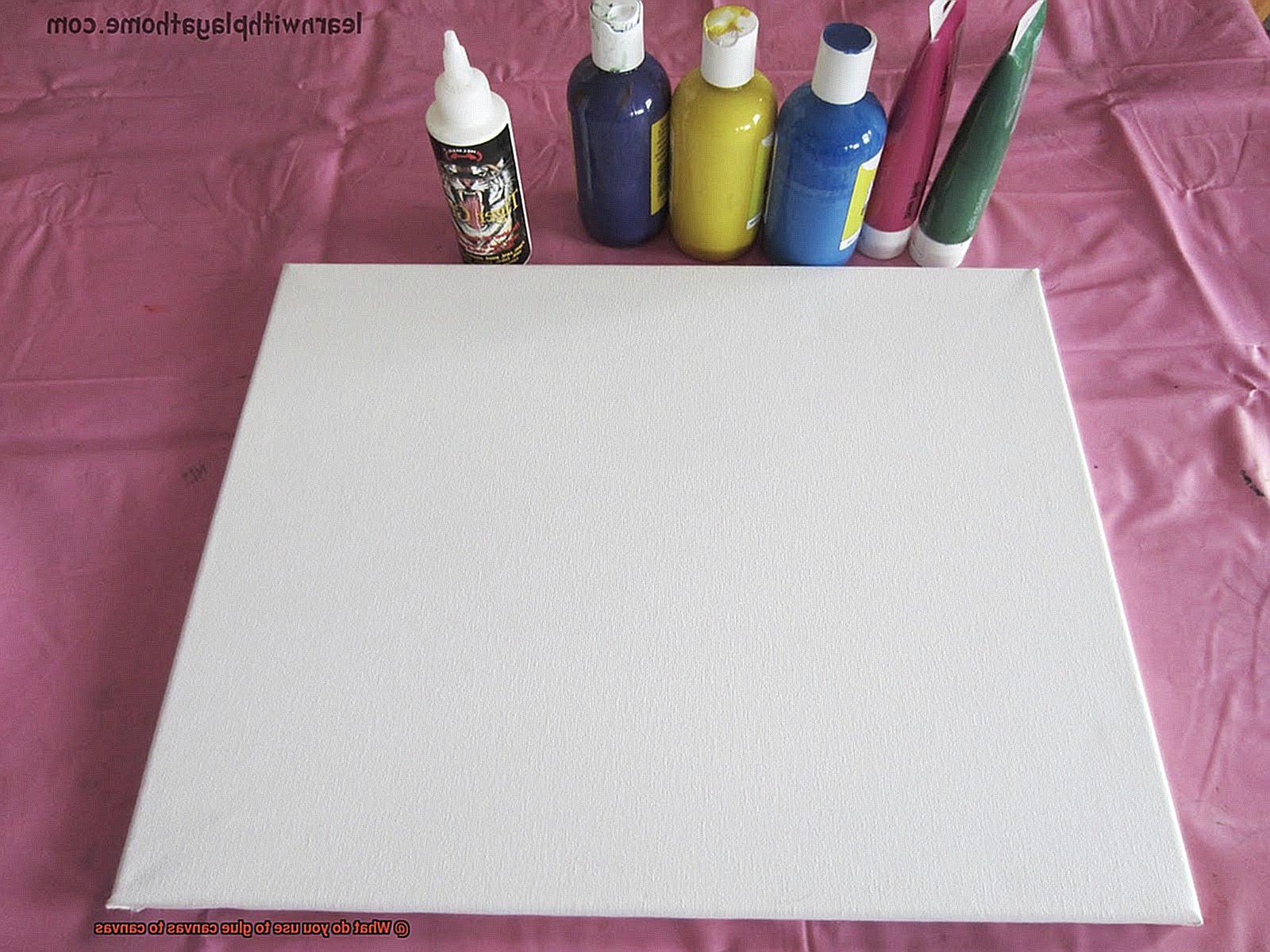
Epoxy Resin
If you’ve ever pondered the seamless gluing of canvas to canvas, your quest is about to end. Epoxy resin, the ultimate adhesive, offers a waterproof and enduring bond that will securely unite your canvases. Let us explore the wonders and limitations of this enchanting substance.
Advantages of using epoxy resin for gluing canvas to canvas:
Impervious Waterproof Bond:
Prepare to defy the elements. Epoxy resin creates a bond that defies moisture and humidity, making it perfect for displaying paintings in damp environments or outdoor settings. No more worries about rain or accidental spills compromising your artwork.
Unyielding Adhesion:
Rest assured, your canvases will stay united under pressure. Epoxy resin ensures a steadfast bond even when faced with stress or movement. Your artwork will remain intact and secure.
Effortless Application:
Simplicity is key. With just two simple steps – mixing the resin and hardener and applying it onto the canvas surfaces – epoxy resin offers a hassle-free gluing experience. Say goodbye to complicated procedures and hello to ease and convenience.
Versatile Marvel:
Explore endless possibilities. Epoxy resin can be applied to various surfaces, including wood, metal, and plastic. Its versatility makes it the perfect adhesive for all your artistic endeavors, expanding your creative horizons beyond canvas alone.
Strength and Immortality:
Witness the resilience of your artwork. Once cured, epoxy resin forges an exceedingly strong bond that transcends time itself. Your masterpiece will withstand the test of years, preserving its integrity for generations to come.
Limitations of epoxy resin for gluing canvas to canvas:
Fragile Canvas Caution:
Handle with care. Thin or delicate canvases may be vulnerable to damage during the gluing process. Exercise caution when working with such materials, ensuring the preservation of your precious artwork.
The Bond That Cannot Be Broken:
Choose wisely. Once canvases are united with epoxy resin, separation becomes a formidable task that risks damaging the artwork. Ensure perfect alignment before applying the adhesive, considering future needs and potential adjustments.
Conclusion:
Epoxy resin is an unwavering ally in the realm of gluing canvas to canvas. Its waterproof qualities, indomitable adhesion capabilities, and user-friendly application make it an indispensable tool for artists and art enthusiasts alike. However, remain vigilant regarding its limitations, especially when dealing with delicate canvases or the possibility of future separation.
Heat-Activated Adhesive Films or Tapes
Fear not. We have the ultimate solution for you – heat-activated adhesive films or tapes. These innovative wonders provide a seamless and reliable way to bond canvases together. Prepare to be captivated as we explore the advantages and considerations of these magical adhesive films.
Advantages:
Precise Perfection:
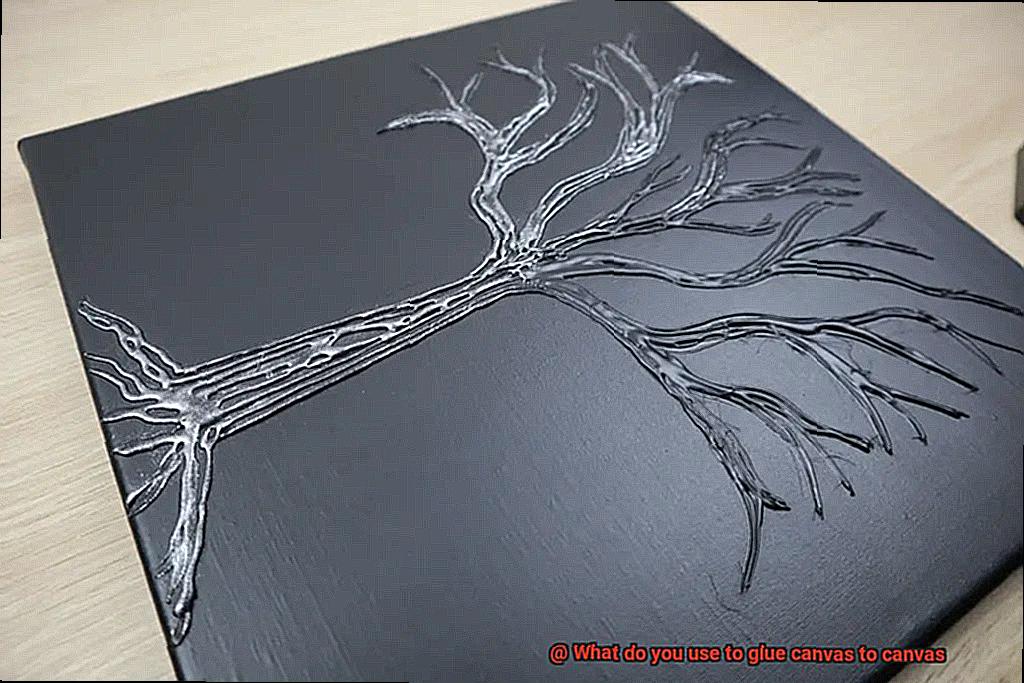
Bid farewell to uneven distribution and glue seepage. Heat-activated adhesive films or tapes grant you unrivaled control over adhesive application, ensuring a flawlessly smooth and even finish.
Indestructible Bonds:
Once heat-activated, these adhesive films forge bonds that can withstand the test of time. From washing to drying, your artwork will remain intact for years to come, defying the forces of wear and tear.
Limitless Possibilities:
These adhesive films aren’t just for canvas bonding; they unlock a world of creative potential. Embellish fabrics, add appliques, and explore a myriad of fabric-to-fabric applications. The versatility knows no bounds, making them an indispensable tool for all your crafting needs.
Considerations:
Instructions are Key:
Every heat-activated adhesive film boasts its own unique set of instructions. To achieve optimal results, immerse yourself in the manufacturer’s guidelines and follow them meticulously.
Compatibility Testing:
Before committing to your entire project, it is vital to test a small fabric sample. This ensures compatibility and allows you to gauge the desired outcome before moving forward.
Selecting the Perfect Match:
The weight of your canvas, intended use of your project, and any specific requirements play a pivotal role in choosing the ideal heat-activated adhesive film for your needs. Take these factors into consideration to guarantee success.
Double-Sided Tape
Double-sided tape is a versatile and convenient adhesive option for gluing canvas to canvas. With its easy application and removal, it offers a range of benefits that make it a go-to choice for many artists and professionals.
One of the greatest advantages of double-sided tape is its convenience. Say goodbye to messy glue spills and sticky fingers. This adhesive comes in various widths and strengths, allowing you to choose the perfect tape for your project. Whether you’re working on a small arts and crafts piece or preparing for a professional exhibition, double-sided tape has got you covered.
To ensure success when using double-sided tape, there are a few things to keep in mind. Firstly, make sure the tape you choose is strong enough to hold the weight of your canvas securely. The last thing you want is for your masterpiece to fall apart. Secondly, give your canvases a good clean before applying the tape. Dust and debris can affect the adhesive’s effectiveness, so it’s best to start with a clean slate.
Applying double-sided tape is a breeze. Simply cut it into desired lengths and stick it onto one canvas. Then, press the other canvas firmly onto the tape, ensuring a secure bond. Voila. You’ve successfully glued your canvases together without breaking a sweat.
However, it’s important to note that while double-sided tape is a great option for many projects, it may not be suitable for all types of canvases or applications. It’s always a good idea to test a small area first before committing to taping the entire surface. Additionally, some users may prefer other adhesive options such as glue or staples depending on their specific needs and preferences.
Sewing as an Alternative to Gluing
When it comes to attaching canvas to canvas, many artists and crafters turn to gluing or double-sided tape as their go-to method. However, sewing provides a secure and long-lasting bond that offers several advantages over gluing. In this article, we will explore the benefits of sewing canvas to canvas and discuss its potential drawbacks. So grab your needle and thread, and let’s dive into the world of sewing as an alternative to gluing.
Advantages of Sewing Canvas to Canvas:
Sewing canvas to canvas offers a range of advantages that make it a superior choice over gluing:
- Durability: Sewing creates a sturdy bond that can withstand stress and tension. Unlike glue, which may weaken over time or under extreme conditions, sewn seams hold up well, making them ideal for long-lasting projects. Whether it’s a heavy-duty upholstery project or a delicate artistic creation, sewing ensures that your canvas pieces stay together.
- Flexibility: Sewn seams allow the fabric to move and stretch without compromising the attachment. This is particularly beneficial for canvas pieces that may need to be manipulated or stretched during installation or display. Whether you’re creating a wall hanging or a wearable art piece, sewing allows the fabric to breathe and flex comfortably.
- Aesthetics: The visible stitching created by sewing adds a unique touch to canvas projects. It can enhance the overall aesthetics and serve as a decorative element, especially in artistic or decorative pieces. From intricate embroidery to bold contrasting threads, sewing allows you to personalize your canvas creations and make them truly one-of-a-kind.
- Versatility: Sewing can be used on various types of canvases, including heavy-duty fabrics like canvas or upholstery materials. It is a versatile method that can be adapted to suit different project requirements. Whether you’re working with thick or thin canvas, sewing provides a reliable attachment method that can be adjusted to meet your needs.
Disadvantages of Sewing Canvas to Canvas:
While sewing offers numerous advantages, it is important to consider its potential drawbacks:
- Equipment Requirement: Sewing canvas to canvas requires a heavy-duty sewing machine capable of stitching through thick materials. This means that a regular household sewing machine may not be suitable for this task. Investing in a suitable machine or accessing one through a local sewing studio or community center may be necessary.
- Skill and Precision: Sewing through thick canvas can be challenging, requiring patience and skill. It may take practice to achieve even stitches and avoid broken needles. However, with practice and attention to technique, you can master the art of sewing canvas and achieve professional-looking results.
1IPqbyV4L-A” >
Conclusion
When it comes to adhering canvas to canvas, there are a few options you can consider.
One popular choice is using a heavy-duty adhesive specifically designed for this purpose. These adhesives are strong and durable, ensuring that your canvases stay securely attached.
Another option is using a fabric glue that is suitable for canvas materials. These glues are formulated to bond fabric together and can be effective in joining canvases.
Additionally, some artists opt for using a heat-activated adhesive film, which requires the use of an iron or heat press to create a strong bond between the canvases.

